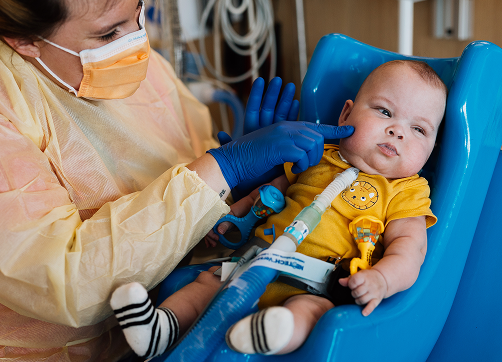atypical craniofacial clefts


about condition
Craniofacial clefts is an umbrella term that encompasses a wide range of facial skin, soft-tissue and bone malformations; these are known as atypical or rare clefts. A craniofacial cleft is an opening or partial malformation of the face and skull. These are also called facial clefts for short; we will use this term throughout to include both cranial and facial clefting.
what is the Tessier Classification for facial clefts?
The Tessier Classification is a group of numbers assigned to the different craniofacial clefts. The numbers are assigned in two groups based on a particular cleft’s position relative to the midline; clefts 0-7 are facial; 8-14 are cranial. They can also be sub-defined based on their location:
- Oral-Nasal – Clefts 0-3
- Oral-Ocular – Clefts 4-6
- Lateral Facial – Clefts 7-9
- Cranial – Clefts 10-14
This number system was created by Paul Tessier, a French maxillofacial surgeon (August 1917-June 2008). He was (and still is) considered the father of craniofacial surgery. Dr. Tessuer worked in Paris and first started doing surgeries on patients with cleft lip and palate in the 1940s. He then started to improve surgical techniques to correct craniofacial malformations in the mid-1950s and performed his first craniofacial surgery in 1967. Throughout the next few decades, he developed the following methods for improvements in craniofacial surgeries that are used today:
- Correction of craniofacial clefts
- Using a patient’s own bone for grafting (instead of silicone, acrylic and other materials) to modify the face and skull contours. Often, this bone is taken from the top of the skull to fill in facial areas.
- Entering the skull bone area (transcranial and subcranial) to correct increased distance between the eyes (orbital hypertelorism)
- Techniques for correction of Treacher Collins syndrome deficiencies
In the 1970s, Dr. Tessier began traveling to the United States to demonstrate and train other surgeons on his procedures. Today, his techniques are applied not only to plastic maxillofacial/craniofacial surgeries but to other specialties such as trauma, ophthalmology, neurosurgery and more.
how do I know if my child will be born with this condition?
Sometimes when an ultrasound is performed during pregnancy, a doctor may notice non-typical signs that require additional testing. More in-depth testing with 2D or 3D ultrasounds or a fetal MRI can reveal much more. Upon birth of the baby, the cleft will be obvious; however, clinical examinations, CT, MRI, and other testing can help to diagnose if the cleft is part of a syndrome. Rarely, severe clefting can occur as part of two syndromes. For any parent having a known craniofacial syndrome, genetic counseling is highly recommended.


how do you treat facial clefting?
Treatment is focused on the specific symptoms apparent in each individual since the severity can vary widely. Several specialties and physicians may be involved throughout the child’s life. Early surgeries may include craniofacial and reconstructive procedures to correct skull and facial malformations. Patients may see some or all of the following physician specialties: pediatrician, neurologist/neurosurgeon, ophthalmologist, otolaryngologist (ENT), audiologist, dentist, orthodontist, oral surgeon, geneticist/genetic counselor, social worker and other health care professionals. Early intervention may be important to ensure that children with this condition reach their full potential. Special services like physical and occupational therapies along with special education may be very beneficial in some cases.
faqs
Very rare; they occur 1 in every 150,000 births.
Yes, since facial development occurs in the first months of pregnancy, a facial cleft is apparent at birth.
Even though surgeries may be in the future, an individual with clefting can have a typical life span depending on the involvement of the condition and surgeries performed.
Genetic syndromes that occur with facial clefting would relate to the gene that caused the syndrome.
Some incidences of clefting occur as part of a genetic syndrome, while others arise spontaneously from the disruption of embryo development. It is not exactly clear all the causes of facial clefting but researchers believe there are many genetic and environmental factors that contribute to craniofacial development. Some of these causes can be radiation exposure, drugs, maternal infections, chromosomal malformations, etc.
Hemifacial Microsomia, Treacher Collins and Goldenhar are some of the conditions that have clefting. Tessier Clefts 6,7 and 8 are the clefts of these conditions.
here when you need us
Whether you’re looking for the right provider, ready to make an appointment, or need care right now—we’re here to help you take the next step with confidence.
